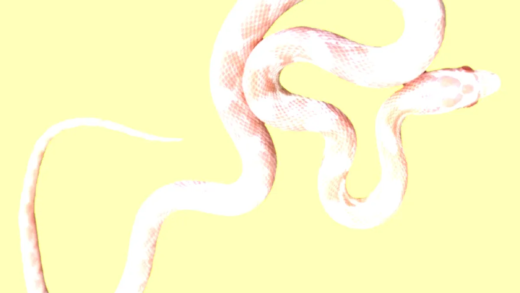Tilikum’s tragic story highlights the ethical issues surrounding orca captivity, showcasing incidents that raised safety concerns and changed public perception of marine parks. His experiences emphasize the need for better treatment of orcas and provoke critical discussions about animal rights and welfare in captivity.
Tilikum’s Background: Who Was He?
Tilikum, the orca, holds significant importance in the discussion of marine parks. Captured in 1983 near Iceland, he became a pivotal figure in the debate over the ethics of keeping orcas in captivity. Tilikum spent over 30 years at SeaWorld, where his life was marked by both fame and tragedy. His story reveals the struggles faced by orcas in captivity and the impact of such environments on their behavior and well-being.
During his time at SeaWorld, Tilikum was involved in several incidents that raised concerns about the safety of trainers and the mental health of captive orcas. His experience reflects broader issues in marine parks, making Tilikum not just a single story, but a representation of a larger conversation about animal rights and conservation.
Orcas Explained: What Makes Them ‘Killer Whales’?
Orcas, often referred to as killer whales, are actually the largest members of the dolphin family. This nickname stems from their hunting prowess and social structure, where they work in pods to hunt various marine animals. Their intelligence and complex behaviors make them fascinating creatures.
Understanding orcas involves exploring their social dynamics, communication methods, and hunting strategies. Orcas are known for their sophisticated vocalizations and ability to learn from each other, which contributes to their reputation as apex predators in the ocean. This social structure is crucial for their survival in the wild.
Natural Habitat of Orcas: Where Do They Live?
Orcas inhabit oceans all over the world, from the icy waters of the Arctic to tropical seas. Their natural habitat is characterized by rich marine ecosystems, where they hunt for fish, seals, and even whales. This diverse environment allows orcas to exhibit their natural behaviors.
In the wild, orcas have vast territories, often traveling long distances in search of food. The health of their natural habitat is vital for their survival, as it provides not only food but also the space needed for social interactions and breeding. Understanding where orcas live helps highlight the differences between their natural behaviors and those observed in captivity.
Wild vs. Captive Behavior: How Do Orcas Act?
Orcas exhibit dramatically different behaviors in the wild compared to their lives in captivity. In their natural habitat, orcas engage in complex social interactions, forming tight-knit family groups known as pods. They communicate using a range of vocalizations, including clicks, whistles, and pulsed calls, which are essential for coordination during hunting and social bonding.
- Wild Behavior: In the wild, orcas swim vast distances—up to 100 miles a day—searching for food like fish, seals, and even other whales. They display intricate hunting techniques, such as bubble-net feeding, where they work together to trap fish.
- Captive Behavior: In captivity, orcas often display abnormal behaviors due to stress and limited space. These behaviors can include pacing, over-grooming, and even aggression towards trainers or other orcas. The confined environment restricts their natural instincts, leading to mental health issues.
The stark contrast between wild and captive orca behavior highlights the challenges faced by these intelligent creatures in marine parks. While orcas in the ocean thrive in their natural roles as apex predators, those in captivity struggle with the limitations imposed upon them.
The Capture: What Happened to Tilikum?
Tilikum’s capture is a significant chapter in his tragic story. In 1983, he was taken from the waters near Iceland, a traumatic event that separated him from his family and natural habitat. This capture involved brutal methods, including nets and boats, which not only traumatized Tilikum but also raised ethical concerns regarding the treatment of marine animals.
During the capture, Tilikum witnessed the death of his pod members, which likely caused severe psychological stress. This experience is not unique to Tilikum; many orcas captured for marine parks face similar fates. The circumstances surrounding Tilikum’s capture serve as a stark reminder of the consequences of removing orcas from their natural environments.
Life at SeaWorld: What Was It Like for Tilikum?
Life at SeaWorld was a mix of performance and confinement for Tilikum. Initially, he became a star attraction, dazzling audiences with his intelligence and ability to perform tricks. However, the reality of his life was far from glamorous. Tilikum was housed in a small tank, which restricted his movements and denied him the opportunity to engage in natural behaviors.
- Training and Performances: Tilikum’s training involved repetitive tasks that prioritized entertainment over his well-being. Trainers used food as a reward, which, while effective, often overlooked the psychological needs of the orca.
- Isolation: Despite being surrounded by trainers and other orcas, Tilikum often experienced isolation. The stress of captivity led to health issues and abnormal behaviors, raising questions about the ethics of keeping such intelligent animals in confined spaces.
Tilikum’s life at SeaWorld reflects the broader issues facing captive orcas. His story is not just about individual suffering; it raises crucial questions about the morality of marine parks and the treatment of animals within them.
Incidents and Concerns: What Happened with Tilikum?
Tilikum’s life at SeaWorld was marred by several tragic incidents that raised serious concerns about the safety of trainers and the mental health of orcas in captivity. The most notable incident occurred in 2010 when Tilikum was involved in the death of trainer Dawn Brancheau. This incident shocked the world and highlighted the dangers of working with highly intelligent but stressed animals in confined spaces.
There were also earlier incidents involving Tilikum, such as the deaths of two other individuals at different facilities. These events raised red flags about the conditions under which orcas are kept and trained. They prompted discussions about the ethics of orca captivity and the need for stricter regulations in marine parks.
- Trainer Safety: The incidents involving Tilikum emphasized the risks trainers face when working with captive orcas. The pressure to perform and the confined spaces can lead to dangerous situations.
- Mental Health: Tilikum’s behavior, including aggression and stress-related issues, raised questions about the psychological impact of captivity on orcas. These concerns are echoed by many animal welfare advocates.
Overall, Tilikum’s incidents serve as a wake-up call for the marine park industry, urging a reevaluation of practices and the treatment of these magnificent creatures.
Impact on Public Perception: How Did Tilikum Change Our View?
Tilikum’s story significantly shifted public perception regarding marine parks and the ethics of keeping orcas in captivity. Following the incidents, particularly the tragic death of Dawn Brancheau, many began to question the morality of orca shows and the entertainment industry surrounding marine parks.
Documentaries like “Blackfish” brought Tilikum’s story into the mainstream, highlighting the psychological and physical toll of captivity on orcas. The film sparked widespread outrage and led to a decline in attendance at marine parks, as people became more aware of the ethical considerations surrounding orca captivity.
- Decline in Popularity: Many marine parks faced backlash, leading to decreased ticket sales and increased calls for change in how orcas are treated.
- Legislative Changes: Tilikum’s story has inspired discussions about potential legislative changes aimed at improving the welfare of captive marine animals.
Tilikum’s legacy lies not only in his tragic life but also in his ability to unite people in advocating for better treatment of orcas and a reevaluation of marine parks.
Ethical Considerations: Should Orcas Be in Captivity?
The ethical implications of keeping orcas in captivity have been brought to the forefront due to Tilikum’s life and the incidents that followed. Critics argue that the confinement of such intelligent and social creatures is inherently cruel, as it deprives them of their natural behaviors and social structures.
There are several key ethical considerations regarding orca captivity:
- Social Needs: Orcas are highly social animals that thrive in complex family structures. Captivity often isolates them from their pods, causing distress.
- Natural Behaviors: The limited space in marine parks prevents orcas from engaging in natural behaviors like hunting and socializing, leading to mental health issues.
- Conservation Arguments: While some argue that marine parks contribute to conservation efforts, many experts believe that the focus should be on protecting orcas in their natural habitats instead.
These ethical considerations challenge the notion of keeping orcas in captivity for entertainment, pushing for a shift towards more humane treatment of marine animals.
Lessons Learned: What Can We Take Away from Tilikum’s Story?
Tilikum’s tragic life offers valuable lessons about the treatment of orcas and the responsibilities we have towards them. His story serves as a reminder of the importance of empathy and understanding in our interactions with all living beings.
Key takeaways from Tilikum’s life include:
- Awareness of Animal Rights: Tilikum’s experiences have highlighted the need for greater awareness of animal rights and welfare in captivity.
- Advocacy for Change: His story has inspired many to advocate for changes in how marine parks operate, promoting better treatment of marine life.
- Importance of Education: Educating the public about orcas and their needs is crucial for fostering a better understanding of their plight.
Tilikum’s life and death have sparked an ongoing dialogue about the ethics of captivity and the need for a more compassionate approach to our relationship with marine animals. His legacy will continue to influence conversations about animal welfare for years to come.





Comments are closed.